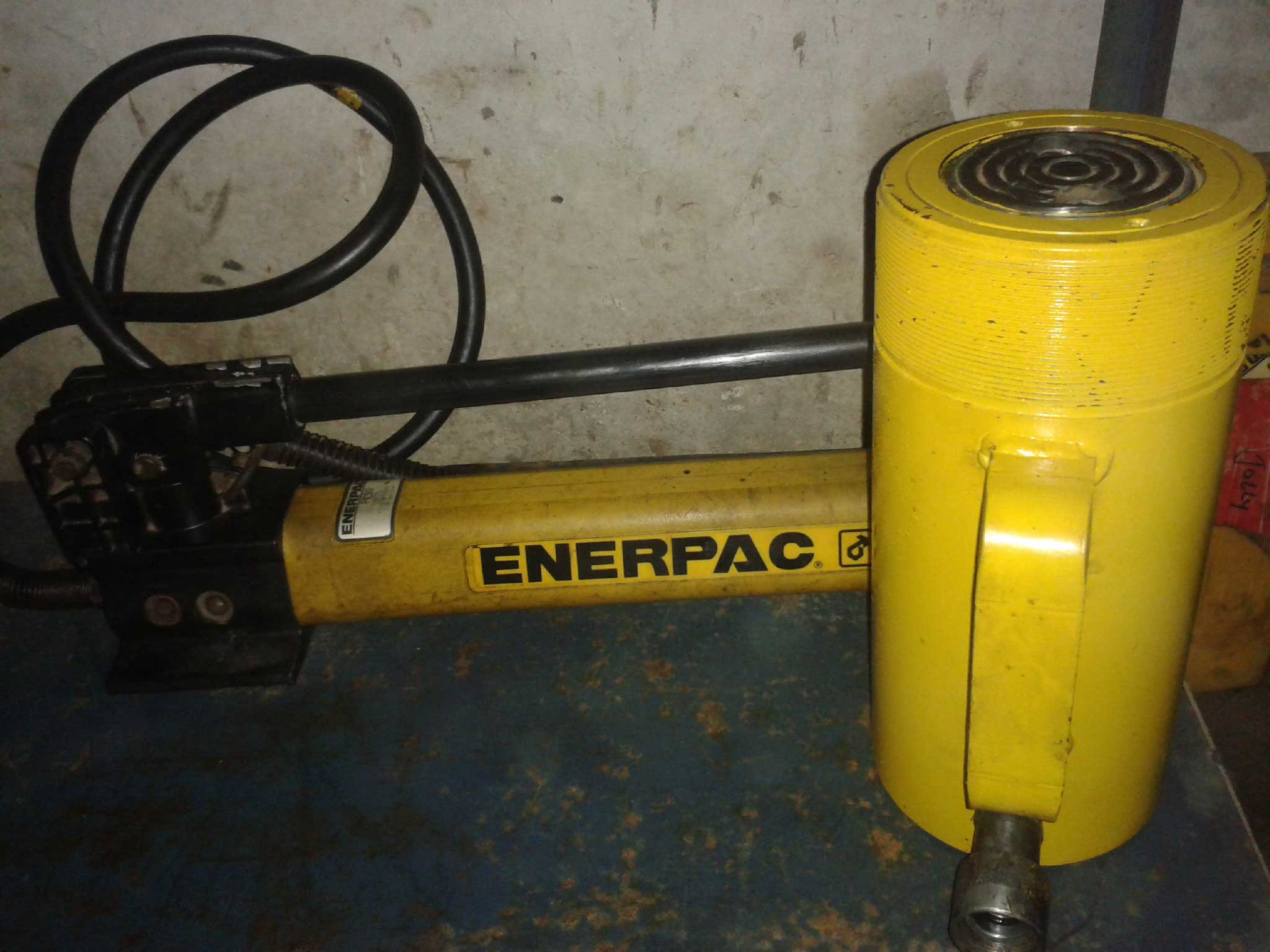derived inventions
Main articles: Water pump and Ejector.
In the 20th century, the stem principle was reused in many inventions. In particular, the air suction capacity exploited by the Venturi effect, spoken of as a water pump, became a well-known piece of equipment in 1868 when chemist Robert Wilhelm Bunsen described its use to activate a Buchner filter 24 vacuum funnel. However, Bunsen recognizes that the father of the tube’s invention goes to Hermann Sprengel, known for his invention of the mercury pump that allowed him to achieve a great vacuum. Sprengel then stated that he had been using this tube in his laboratory since 1860, but because of the system’s simplicity as well as its proximity to previous proposals by many physicists, he never believed his invention to be significant or patentable. The circulating water pump is an ejector in which the water is replaced by any V7 liquid or gas.
Enerpac pulse pump
Another feature of the stem, the gravitational flow of a mixture of air and water in a vertical tube, was also reused by reversing its role. In pneumatic lift, compressed air is used to lift water: in this case it is also an element of the stem whose function is reflected by V 8. This same compressed air from Taylor’s horn can be used to use a chute with low height and high flow velocity to lift a small amount of water to a high altitude. This combination is an impact pump whose extreme simplicity ensures its popularity 26.
the operation
A native
chart
The main elements of a traditional trumpet.
For a more general article, see Venturi’s work.
The stem uses a depression that is created in the venturi contraction when water passes through it. Water stored in an upstream reservoir flows into the “tree,” or trunk body. The flow is regulated by “Thrompy” which more or less blocks the Enerpac entrance. The throttle (pronounced “throttle”) is located just above the air intake, the “vacuum”. At this altitude, the air mixes with the water and the two form a heterogeneous mixture. It then falls into the “wind box” (called the “bar” if it’s in boomerang form), where the Enerpac combo hits the “table” or “bench”. The air and water are then separated, first flowing through the slit in the lower part, while the air, under the pressure of the liquid coming down in the shaft, exits the top through the “leg” channel 10.
The fall height of a traditional trumpet (i.e. Catalan, Dauphinois, Pyrene, Pays de Foix, etc.)
According to the Venturi principle, when the height between the upper tank water level and the throttle increases, the suction air flow increases. The air pressure is proportional to the length of the column up to a point. To improve stem efficiency, the air-to-water ratio must be maximized. The intuitive aspect of these principles belies the originality of the invention. So historically, the trunk has always been presented as a clever and even revolutionary invention, but scientific studies are scarce V9.
However, the simplicity of the stem conceals the complexity of the physical phenomena involved. In particular, entrapment of air by water in a pump is a problem in two-phase fluid mechanics that was not satisfactorily explained until Heinrich Gustav Magnus’ Enerpac theory, formulated in 1851, or confirmed by the experiments of George Farrier Rodwell (1843- 1843). 1905) in 1864. By studying the behavior of air bubbles inside a transparent box, he determined the ideal water-to-air ratio V of 10.
In 1954, Leroy E. Schulze created a milestone by combining knowledge and experience gained through the operation of pumps. Then, in 1976, Warren Rice published the first complete single-body hydrodynamic model. Since then, other researchers have simplified or deepened this Y 1 physical modeling.

Enerpac performance
For easy propagation of the stem, it is necessary to fall from a certain height: 5 meters is considered the minimum. However, at lower fall heights the pressure is low: a drop of 6 meters can produce a pressure of 30 to 70 mm Hg, i.e. 0.41 to 0.95 m of water or 40 to 93 mbar, provided air/water is present. The volume ratio is equal to 10 1. Jean-François d’Aubison, who conducted a series of experiments in the Rancié mines in 1828, obtained an energy efficiency of only 3%, with a drop of 5 metres. With a drop of 5.5m, an efficiency of between 7 and 10% is obtained, this efficiency increases when settings favor air pressure over flow. With a 10-meter head, it can reach an efficiency of 17% V 11.
Studies and efforts to improve focus on the specification of water inlets, “throttling” and air inlets, and “scavenging charges,” multiples that are regularly proposed, do not reach general efficiency v 12. In 1875, enerpac Emanuel Louis Groner outlined best practices. Its recommendations can be summed up in a few key features:
Columns with a length of 5 to 10 m are preferred, providing compression equal to about 10% of the column length, with a shrinkage section (0.15 m diameter), i.e. 62% of the arbor section (0.24 m). in diameter), to create an airflow similar to that of water (about 60 liters per second) and at a pressure of 50-60 mmHg, an efficiency between 10 and 12% [اجازه می دهد]. An explicit recommendation appears regarding air velocity in ducts, which should be less than 10 m/s to avoid excessive pressure drop, and is a reference value that is always used when duct approximation. The use of a submerged and bottomless windbox prevents losses due to water discharge. In addition, the seat has an optimized shape to reduce losses due to the impact of the water column with the V 13 seat. »
– Victor and Navara smelters, new applications for Pyrenean water pipes
Horn Taylor Energypack
By separating the fall height from the water column height, the design of Frizell-Taylor compressors allows high pressure air to exist at any S1 fall height. This flexibility is also related to the power delivered, which ranges from a few kilowatts to several megawatts. Power, which corresponds to airflow delivered at constant pressure, can be achieved with any compromise between head height and water flow. Thus, Clostal’s trunk falls 15 times more than Ainsworth’s, but uses 40 times less water. Likewise, the air-to-water ratio can be greatly modified: ratios exist from 0.25 to 3.20 S2, S3.
PV diagram for constant and equal pressures
Clapeyron diagram for different pressures P1 → P2 in an open system.
The equal pressure reduces the beneficial work provided to the air: the process is more energy efficient, but the energy efficiency is lower than Y2.
One of the more remarkable aspects of these new tubes is their performance. With the Frizell-Taylor system, pressure is recovered to travel to the siphon outlet arm rather than being discharged by shock into the windbox. Evaluating this energy can increase efficiency by up to 80% V 16 , as predicted by Frizzell in his first V 3 descriptions. Systematic studies and modeling also make it possible to assess the influence of several parameters:
Performance is only slightly improved with the use of a longer tube V 17.
Likewise, the relative slip of water/air has little effect on performance.
On the other hand, with an increase in the height of the water above the contraction, that is, its flow, the efficiency V 18 decreases. This is mainly due to the increase in friction losses that occur along the shaft with an increase in the current V 17.
The air-to-water ratio has a significant effect on air pressure: when the air-to-water ratio increases, the air pressure decreases. But this drop in pressure is more than offset by the increase in airflow caused by a given water flow. Therefore, a higher air/water ratio increases performance, which confirms the intuitive practice, which favors sucking in the largest amount of air for the same V 19 water flow.










